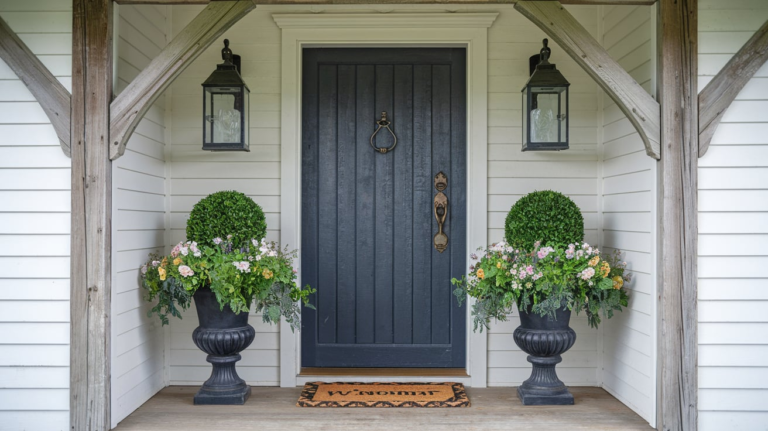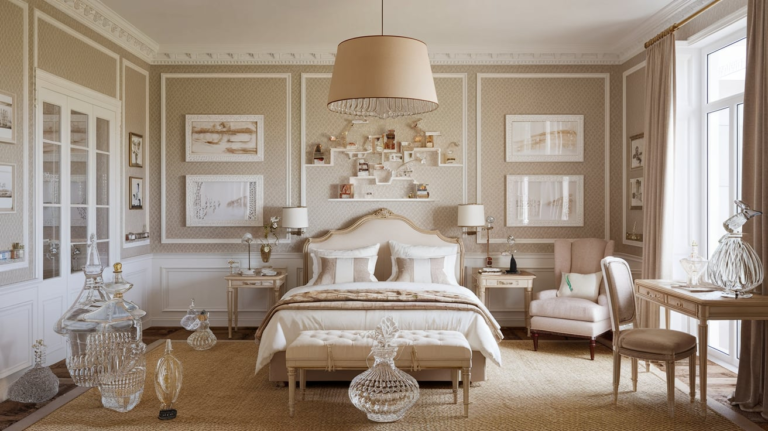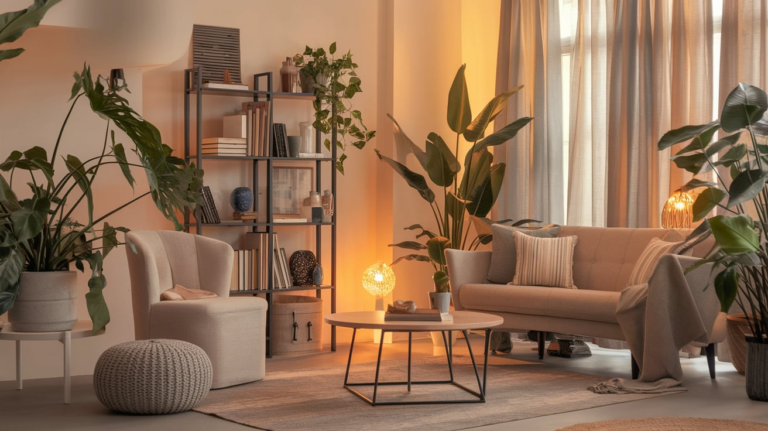28 Kids Room Decor Ideas: Inspiring Designs for Playful Spaces
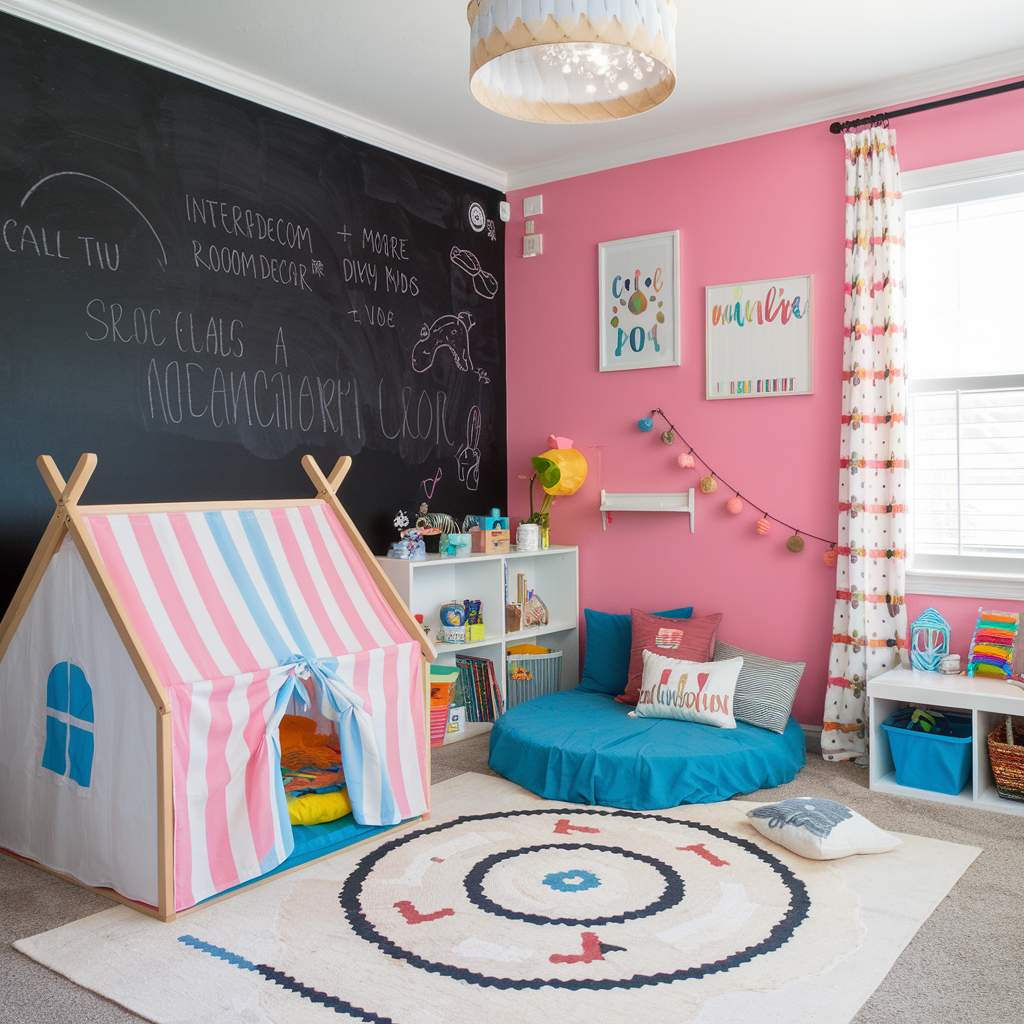
Designing a kid’s room is no small feat. It’s not just about slapping some colorful paint on the walls or tossing in a few toys.
A child’s room should be a sanctuary for imagination, a place where creativity flows and every corner invites exploration.
But it also needs to be functional, practical, and easy to maintain—because let’s face it, a room that looks good but doesn’t work for the daily chaos is only half of the battle.
1. Embrace Bold Colors: Playful Walls for Playful Minds
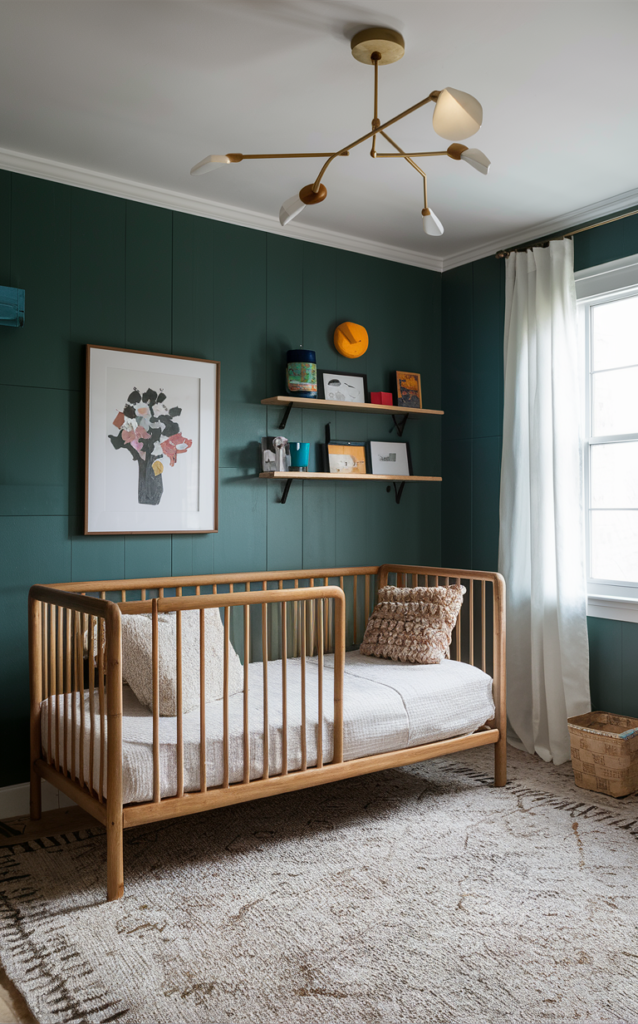
The color of a room can completely transform its vibe. For a child’s room, bold colors are a great way to set the tone. Bright hues like yellow, red, and blue invite energy and creativity, while pastel shades like lavender, mint, and peach promote calmness and relaxation. But don’t feel restricted to just painting the walls—think of colors as your canvas.
For a bold look, consider a two-tone wall design. A bottom half in one color and the top half in another, separated by a line of wall trim, can add interest without overwhelming the space. Alternatively, you could create a feature wall with stripes, geometric shapes, or even a fun mural that reflects your child’s personality or interests.
Tip:
For small rooms, lighter shades can make the space feel more open. Conversely, deep tones can help create a cozy, inviting atmosphere.
2. Themed Spaces: Let Their Imagination Run Wild
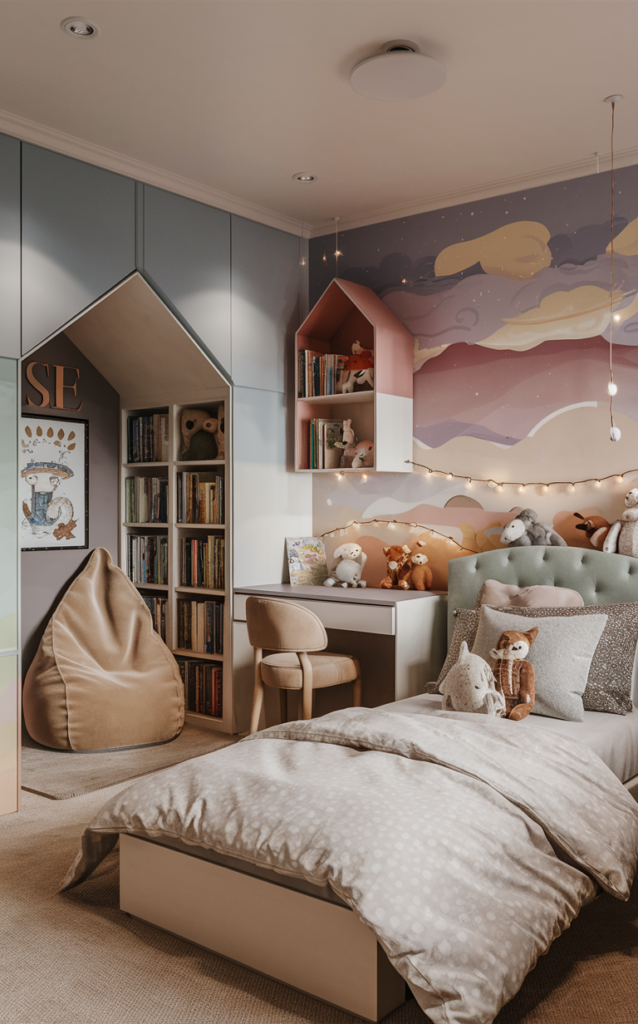
When kids are involved, the sky is the limit for creativity. One of the best ways to bring your child’s favorite world into their room is by going for a themed room. Think of it as a stage where their imagination can run wild. Whether it’s a princess castle, a pirate ship, or a superhero lair, themed rooms can make ordinary spaces feel extraordinary.
Not only do themed rooms make children feel like they’re stepping into their very own fantasy, but they also provide a clear structure for the room’s design. You can create a cohesive look using matching bedding, curtains, wall art, and furniture that ties the theme together.
Tip:
Choose a theme that allows flexibility. For instance, a space-themed room with stars and planets can easily evolve into a science-themed room with space exploration and robotics elements as your child grows.
3. Interactive Wall Art: Making the Walls a Playground
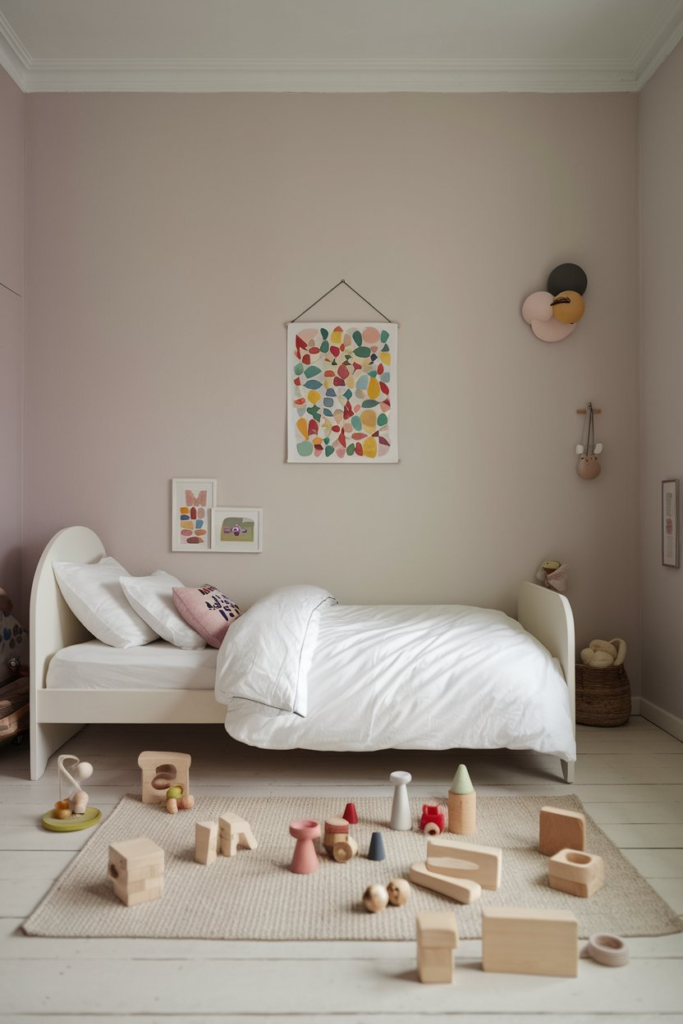
When it comes to kids’ room decor, wall art is an easy and impactful way to elevate the room’s design. But this doesn’t have to mean just sticking up a few prints on the wall. How about creating an interactive art wall where your child can contribute to the room’s aesthetic?
Consider chalkboard paint or magnetic paint that turns the entire wall into a giant canvas for doodles, drawings, or even attaching their favorite photos, puzzles, or inspirational quotes. A gallery wall featuring their artwork gives them a sense of ownership and pride, while also allowing you to swap out their creations as they evolve.
Tip:
Wall decals are another fantastic way to add color and fun. They’re removable, so as your child’s tastes change, you can update them with ease.
4. Functional Furniture: The Magic of Multi-Use Pieces
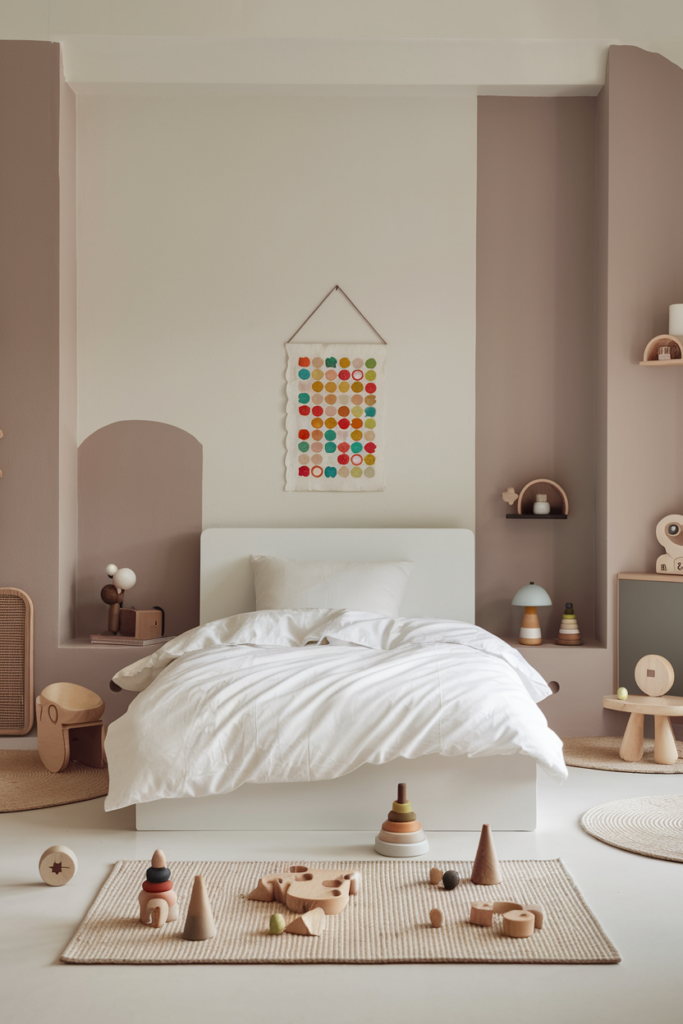
Kids’ rooms often need to do double (or triple) duty. Between being a space for sleeping, playing, and studying, the furniture has to be both stylish and practical. That’s where multi-functional furniture comes into play.
Opt for beds with built-in storage underneath, desks that transform into craft stations, or even bunk beds that double as a cozy reading nook. You can also look for modular furniture that can be reconfigured as your child’s needs evolve. For example, a changing table that transforms into a desk or a crib that later becomes a toddler bed can save money and space in the long run.
Tip:
Make the most of vertical space with wall-mounted shelves or hanging organizers that store toys and books, keeping the floor clear for play.
5. Cozy Reading Nook: Encouraging a Love of Books
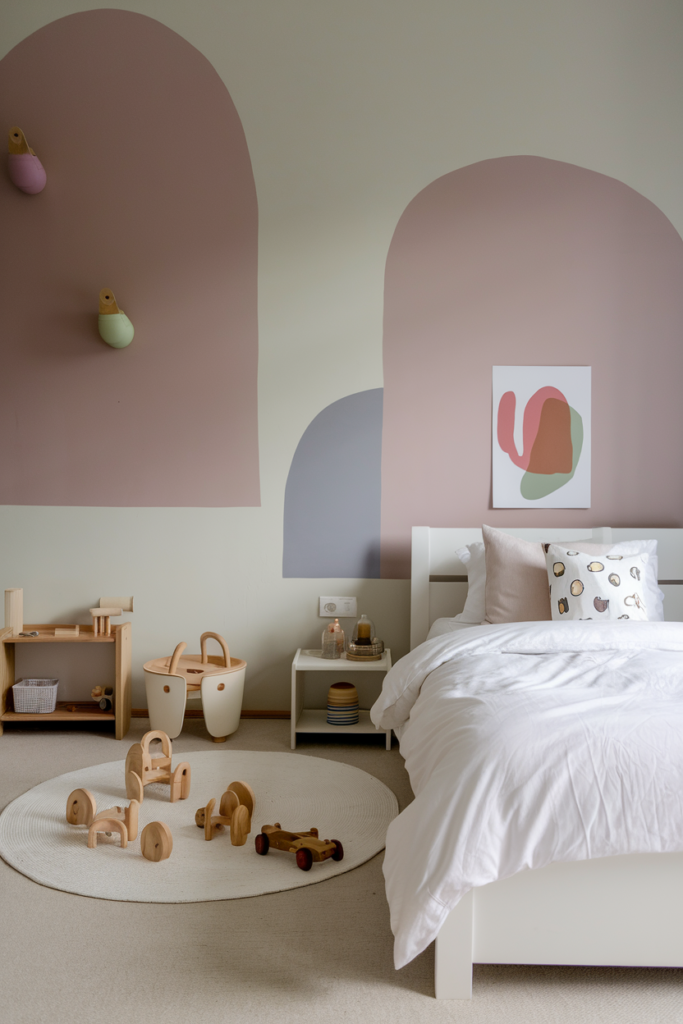
A dedicated reading nook is one of the simplest yet most effective ways to encourage your child to settle down with a good book. This quiet corner should feel like a mini sanctuary where your child can relax, read, and get lost in their imagination.
Invest in a comfortable chair or bean bag and a soft rug where they can curl up. Consider adding a small bookshelf stocked with their favorite books. For added charm, hang string lights or use a soft, dimmable lamp to create a cozy, warm glow perfect for reading.
Tip:
Build a reading tent or teepee for an even cozier, whimsical touch. Add some cushions and soft blankets for an extra inviting environment.
6. The Power of Personalized Decor
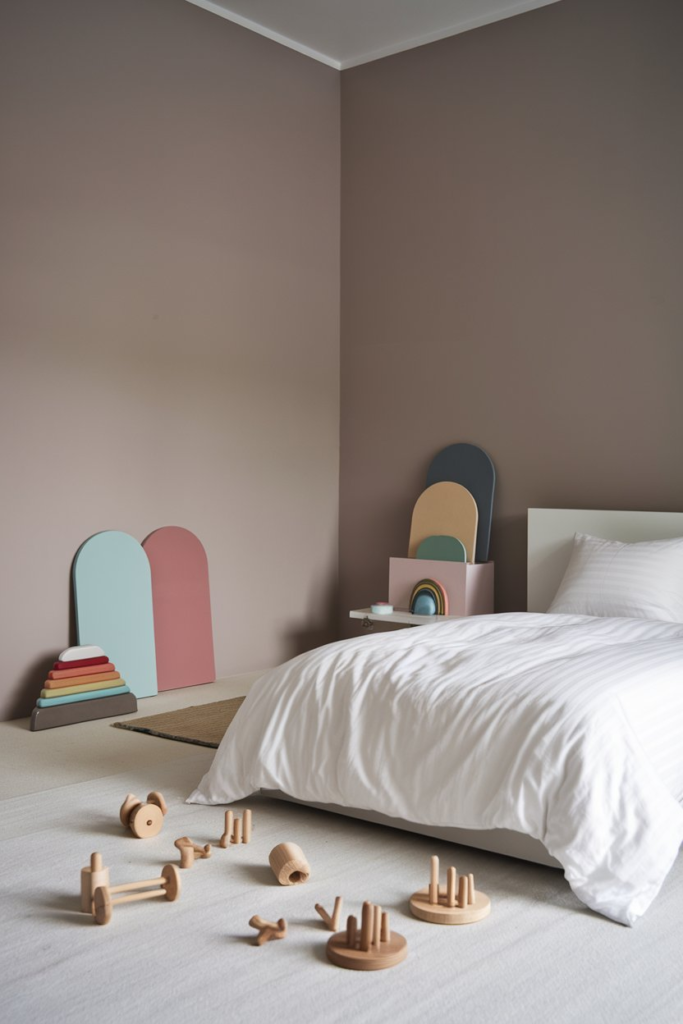
Personalization is key when it comes to creating a space that feels like home for your child. Custom-made items, like a name sign, monogrammed pillows, or personalized wall art, make the room feel more special.
You can also display their artwork on the walls or create a small memory board where they can hang up drawings, photos, and other keepsakes. This approach not only decorates the room but also gives your child a sense of pride and ownership.
Tip:
Create a name wall where you can display their name in different fonts, colors, or artistic styles. It adds a personal and creative touch to the room.
7. Play Zones: Let the Fun Begin
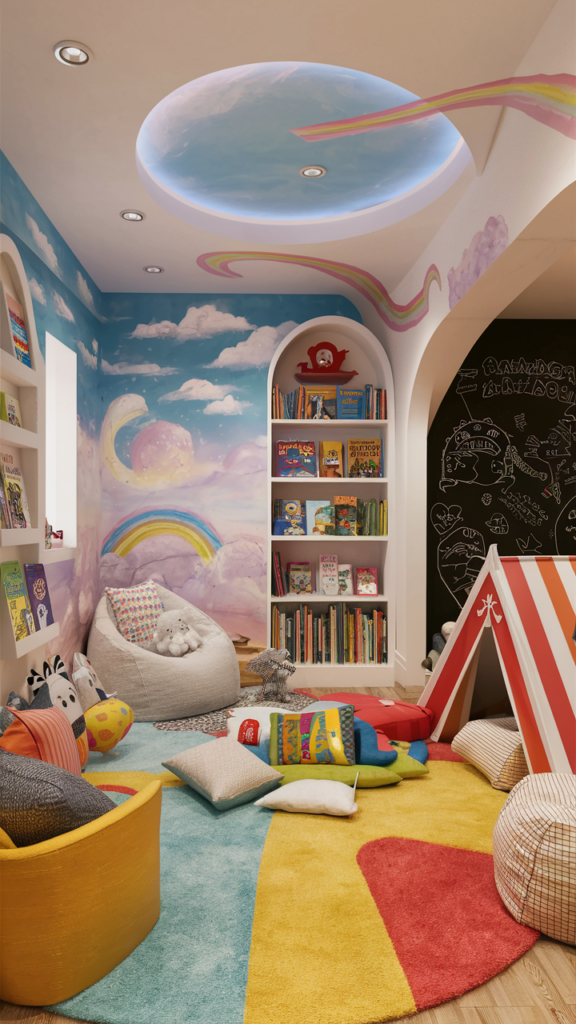
A child’s room should be a place of play, and what better way to invite fun than by designing a play zone. Whether you have a large space or a small corner, this area can be dedicated entirely to imaginative play.
Set up a fort-making station with blankets, pillows, and plenty of open space for creating epic forts. Or use play mats, large soft rugs, or cushioned flooring to create a safe, comfortable area for active play. A dress-up corner with costumes, hats, and props can also spark creativity and give your child endless opportunities to explore different characters and stories.
Tip:
If space is tight, try a fold-away play table that can be tucked away when not in use.
8. Creative Lighting: Setting the Mood
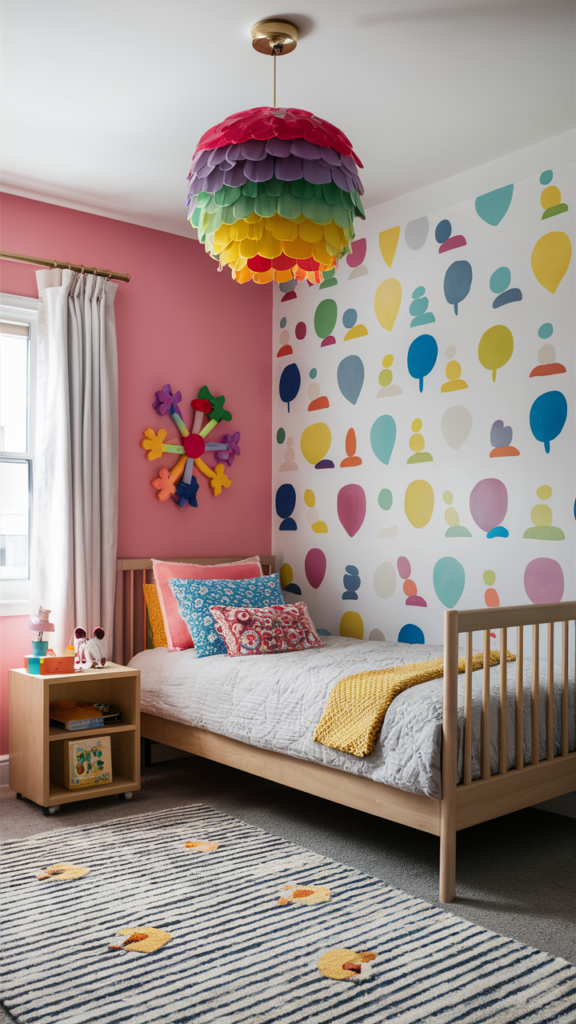
Lighting is often an afterthought, but it’s crucial for setting the mood in a child’s room. You can make lighting fun and functional by incorporating a mix of ambient, task, and accent lighting.
Start with a soft ceiling light that illuminates the room. Layer in task lighting, like reading lamps or desk lamps, for specific tasks like homework or craft projects. Add whimsical touches like string lights, fairy lights, or novelty lamps shaped like animals, stars, or even their favorite cartoon characters.
Tip:
A night light is a must-have for kids who feel nervous at night. Choose a light that is gentle on the eyes and can be easily turned on and off by your child.
9. Storage That Works: Organizing the Chaos
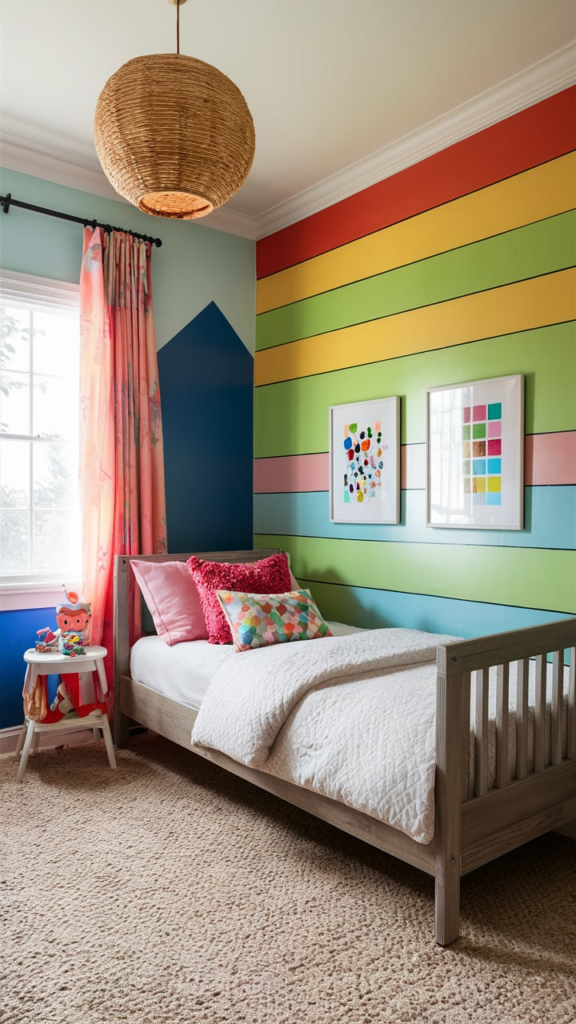
One of the most important elements of any kids’ room is storage. Toys, clothes, and books tend to pile up, and finding a place to keep everything organized is key to maintaining a tidy, functional space.
Invest in storage bins, toy chests, or over-the-door organizers that can hold everything from dolls to board games. Open shelves or cubbies are also great for easy access, while keeping everything neat and visible. Look for pieces that are playful and fun, such as bins with animal faces or brightly colored baskets.
Tip:
Label storage bins with pictures or words so your child can easily identify where things belong. This helps them feel more involved in the organization process.
10. Nature-Inspired Elements: Bringing the Outdoors In
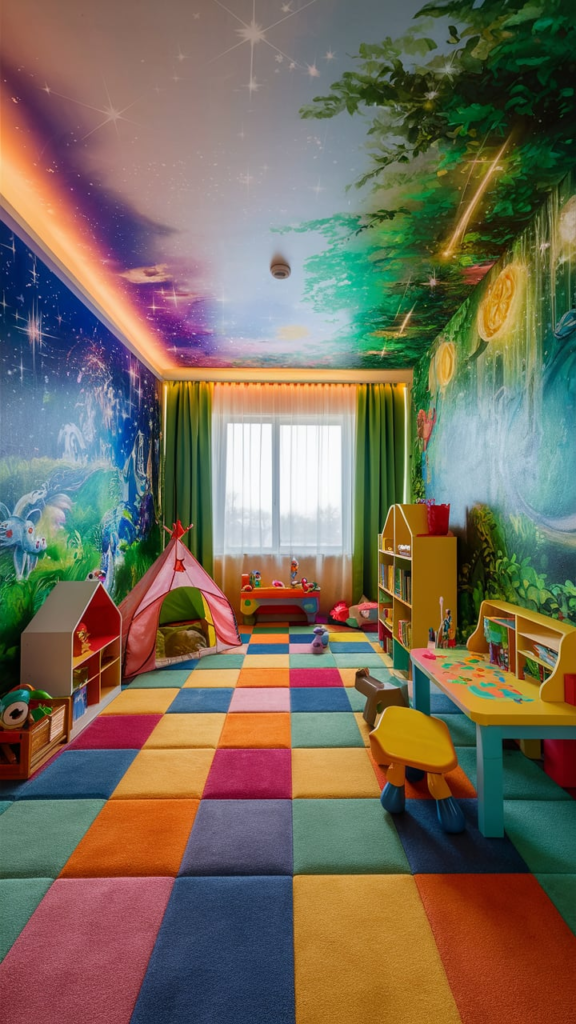
There’s something about nature that instantly calms and nurtures. Incorporating natural elements into your child’s room can create a serene, balanced environment.
Add wooden furniture or wooden shelving for a rustic feel. You can even introduce live plants like succulents, ferns, or pothos to add a touch of greenery and fresh air to the room. Be mindful of plant safety, though, and avoid toxic varieties.
For a nature-inspired theme, you can also create forest murals, hang nature-themed wall art, or incorporate animal figurines as decor. A treehouse bed or a branch bookshelf adds a whimsical touch to the space.
Tip:
Opt for plant-friendly accessories like plant shelves or hanging planters to create a fresh, green vibe.
11. Repurposed and Upcycled Furniture: Sustainability in Style
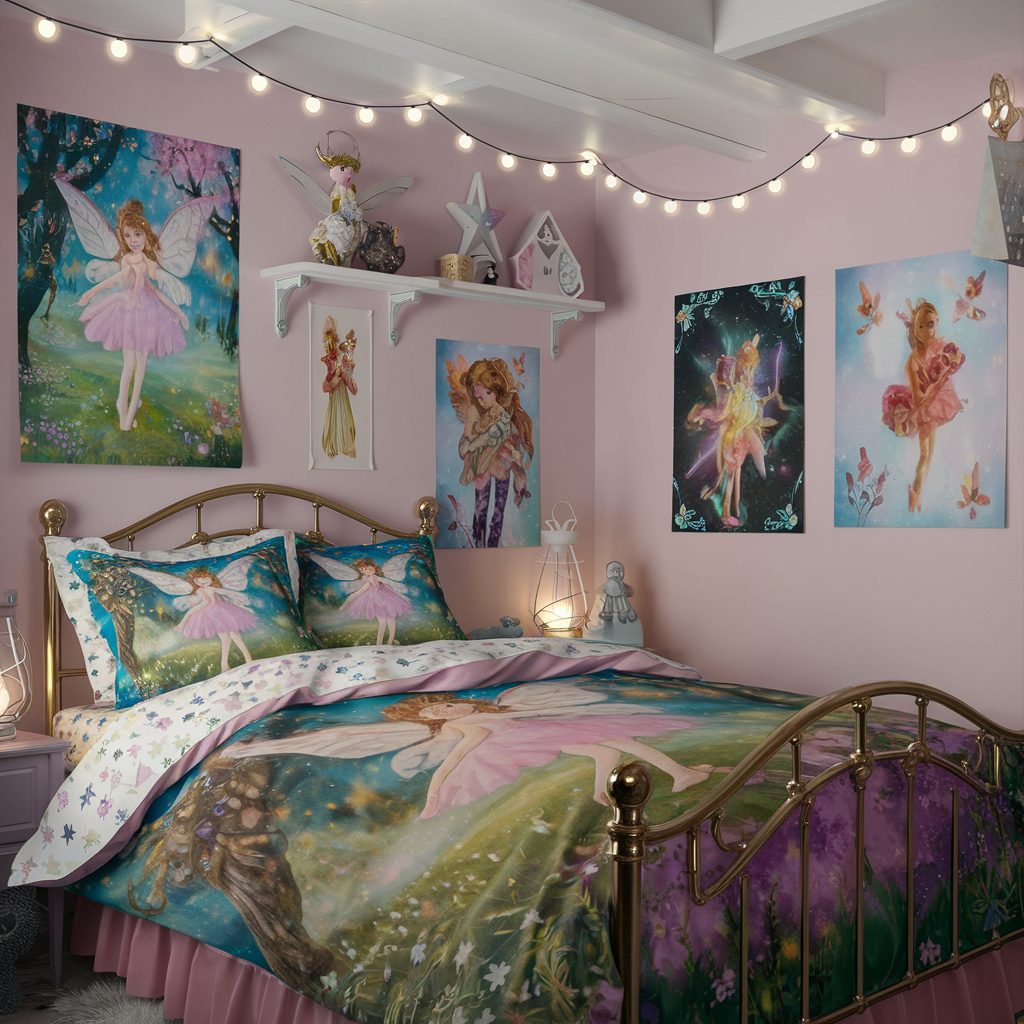
Eco-friendly, upcycled furniture is a great way to add character and sustainability to your child’s room. Look for old furniture pieces that can be repurposed with a little paint, new hardware, or creative modifications.
For example, an old dresser can become a chic toy chest with a fresh coat of paint. Or a set of wooden crates can be stacked to create a unique bookshelf. Repurposed furniture not only adds charm to the room but also teaches kids about sustainability.
Tip:
Visit thrift stores or vintage shops for pieces that can be easily transformed with a little DIY magic.
Conclusion
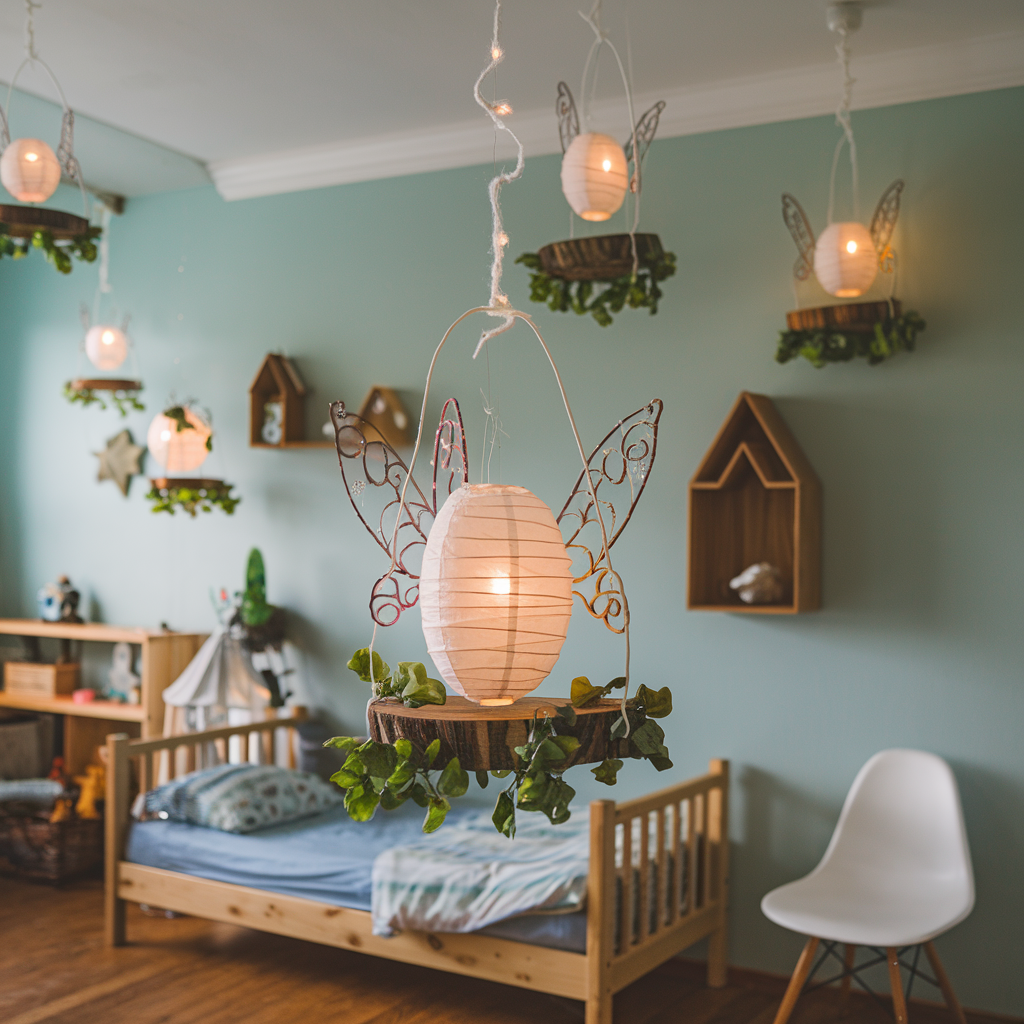
Designing a kids’ room isn’t just about aesthetics; it’s about creating a space that will evolve as your child grows.
Whether you’re starting with a themed room for a toddler or a more functional space for an older child, the key is to combine creativity and practicality.

